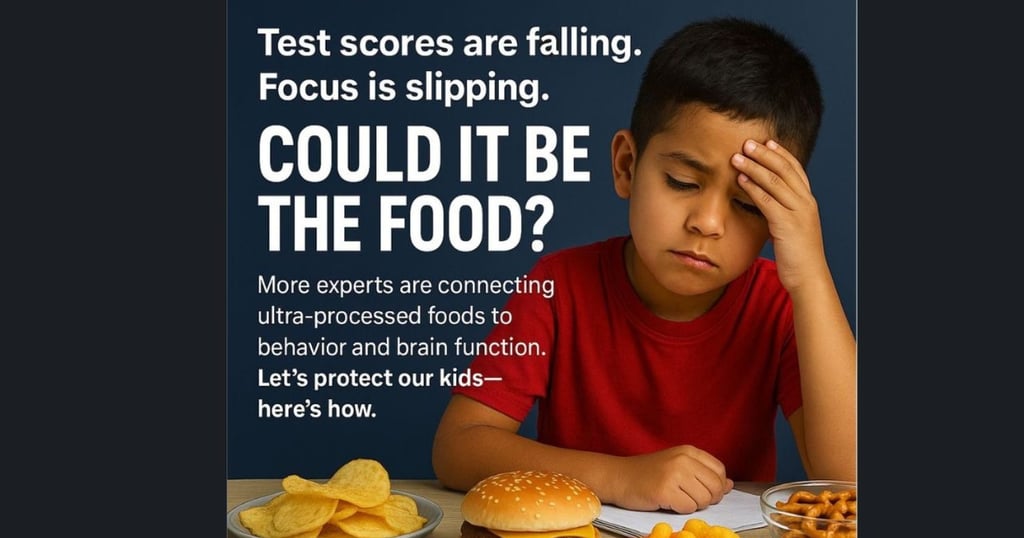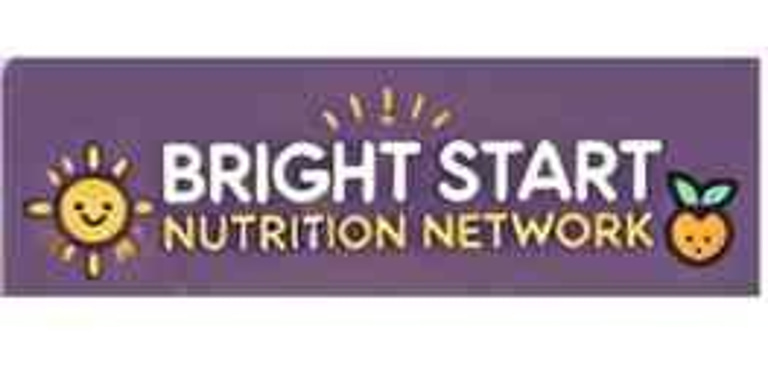What Are Ultra-Processed Foods? A Guide for Families
A quick, simple explanation of ultra processed foods for families
Bright Start
5/28/20252 min read


Ultra-processed foods have quietly taken over our pantries, lunchboxes, and dinner tables — but what exactly are they, and why should families be concerned?
In this guide, we’ll break it down simply and clearly — no fear-mongering, just facts. We believe families have a right to know what’s in their food and how it impacts their children’s long-term health. And believe it or not, ultra processed foods make up about 70% of our food, according to the latest estimates.
🍩 What Are Ultra-Processed Foods?
Ultra-processed foods (UPFs) are industrially formulated items made mostly or entirely from substances not commonly used in home cooking. This includes:
Artificial flavors
Preservatives
Colorings
Sweeteners
Emulsifiers
Refined starches
They often come in boxes, bags, or bottles — think snack cakes, chips, sugary cereals, frozen dinners, and soda. These additives act as preservatives, flavor enhancers and are supposed to make the food more appealing (color and texture).
😧 Why Should You Be Concerned?
Recent studies show that diets high in ultra-processed foods can contribute to:
Increased risk of obesity and diabetes
And yes, these chemicals can create behavioral issues, hyperactivity and attention difficulties in children
Digestive and immune problems
Accelerated cognitive decline in adults
Children are especially vulnerable, as their brains and bodies are still developing. Include them in the process of your family’s nutrition education. Making them partners in the process will teach them to make informed choices and help them understand the connection with good nutrition to their health and wellbeing.
🔍 How to Identify Ultra-Processed Foods
Reading the front label isn’t enough — always flip the package over. The front is the package contains mostly marketing claims. When you reading the ingredients, watch out for:
Long ingredient lists
Unfamiliar chemical names
Artificial sweeteners and preservatives
Basicly, if you don’t recognize the name, then it doesn’t belong in your food. But we got cha. Want a cheat sheet? We created a family-friendly checklist you can print and take to the store with you.
👉 [Download the UPF Checklist Here]
✅ What You Can Do Instead
Start small. Don’t overwhelm yourself and your family with broad sweeping goals. Those are hard to maintain. Baby Steps. Swap just one item a week with a whole-food version.Sap ThisFor This
Fruit snacks - Swap with
Fresh fruit or dried mango
Sugary cereal - Swap with
Oatmeal with fruit & cinnamon
Soda - Swap with
Sparkling water with citrus
Chicken nuggets - Swap with
Homemade baked tenders
Final Thoughts
Bright Start Nutrition is here to support your family’s journey toward better health — one meal, one snack, one label at a time. The first step? Awareness.
And remember: it's not about being perfect. It’s about making small, meaningful changes that stick.
📩 Want more tips and tools? Sign up for our mailing list to get more great ideas delivered to your mailbox.
